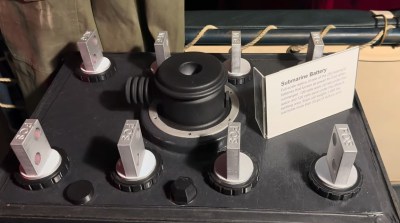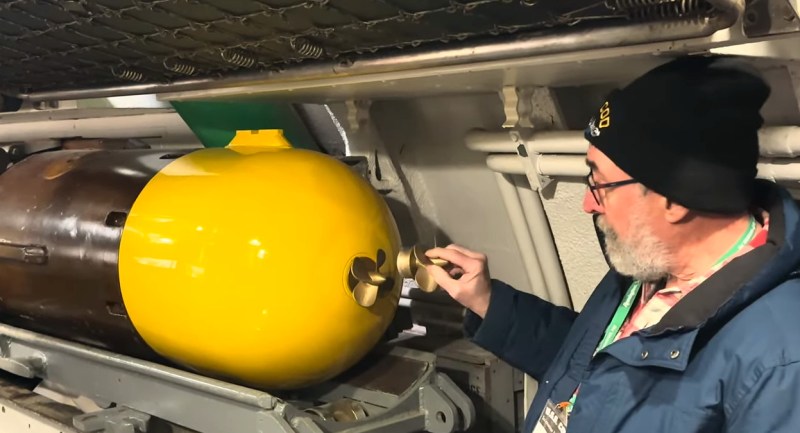The USS Cod is a Gato-class submarine that saw combat in the Second World War and today operates as a museum ship in Cleveland, Ohio. While many other surviving WWII-era subs were cut into pieces or otherwise modified for public display, Cod is notable for being intact and still in her wartime configuration. It’s considered to be one of the finest submarine restorations in the world, and in a recent video from their official YouTube page, we get a look at how 3D printing is used to keep the 82 year old submarine looking battle-ready.
In the video below, President of the USS Cod Submarine Memorial [Paul Farace] is joined by one of the volunteers who’s been designing and printing parts aboard the submarine. While the Cod is in remarkable condition overall, there’s no shortage of odd bits and pieces that have gone missing over the sub’s decades of service.

Many of these parts are all but unobtainable today, so being able to recreate a look-alike based on drawings and images of the original components is an incredible asset to the team as they work towards accurately recreating what it was like to live and work aboard a Gato-class submarine.
A prime example from the video has to deal with the Mark 27 torpedo that’s on display aboard Cod. The team knew from contemporary images and diagrams that there was supposed to be a small “spinner” propeller at the nose of the torpedo, but it was missing on theirs. So after measuring the opening, a printed facsimile was created which could slide into the nose of the torpedo without requiring any glue or other modifications to the original artifact. The video also references a larger project to create replica batteries for Cod — while the recreated cells are primarily made of painted wood, the terminals and other details on the top are 3D printed.
As we saw underneath the battleship USS New Jersey, solving the unique challenges presented by the preservation of these floating museums often takes some out of the box thinking. Makes us wonder how often those in the hacking and making community get a chance to lend their skills towards projects like these. If you’ve ever found yourself hacking around in a museum, floating or otherwise, we’d love to hear about it.
















Absolutely fascinating. I remember visiting a submarine museum in the UK many years ago, and touring a similar WWII-era diesel-electric boat, and marveling at how a large crew could operate in such a confined space. I remember the docent telling us – from his personal experience – that at the start of a deployment, supplies and vittles would be stacked in every conceivable part of the boat, to the extent that even the wash-basins couldn’t be reached. Any crew wanting to wash or shave had to wait until they had literally, eaten their way to the sink :)
Also, I did a double-take when I saw the name of this boat.
Any relation to Bob Newhart’s wonderful “U.S.S. Codfish”? :)
https://youtu.be/Njk12PNYdjQ?si=7bdqfs8DPQi4erhK
I recently attended a school tour of the USS Blueback that is docked in Portland, Oregon. The old-timer who served on similar submarines shared stories like yours. Like you described, at the beginning of a tour every possible surface was covered with cans of food and perishable supplies. This included the entire floor of the submarine, showers, tables, sinks, ballast areas, and any other nook or cranny that could fit supplies. Rubber matts were laid down on top of the layers of cans on the floor and the crew would just walk on top, taking care to duck for the extra-lower-than-usual ceilings.
Portland Oregon you say? Just down the road from me here. Thanks for the tip, I shall plan for a visit to the “Blueback”!
I also remember that the galley (ie kitchen) on the boat I toured was barely larger than a telephone booth. How the chef was able to prepare nutritious and healthy food for a crew of dozens, in such a limited space, I have no idea.